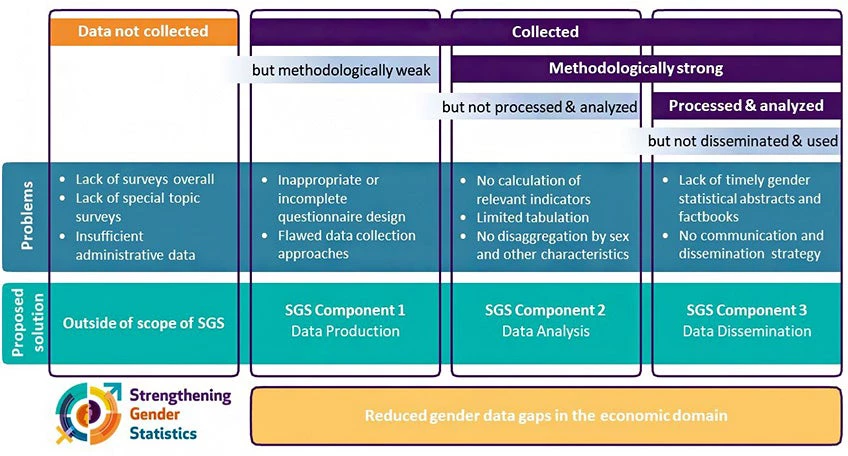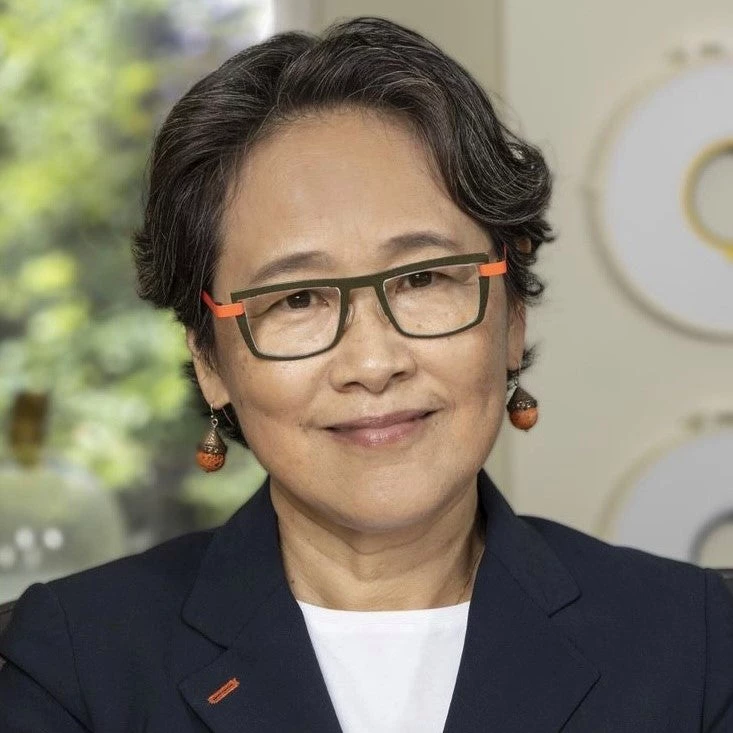 Image of schoolgirls smiling
Image of schoolgirls smiling
Over the last decade, maternal mortality has decreased and girls’ enrollment in secondary school has considerably increased, but many discriminatory laws in 178 countries which host 2.4 billion working-age women hold them back from fully participating in the economy. In the last two years, as a consequence of the COVID-19 pandemic, significantly fewer Ugandan girls than boys returned to school after pandemic-related closures, and a majority of Bangladeshi girls have reported spending less time on education.

Note: For an interactive version of the visual, visit the World Bank Gender Data Portal.
Source: WHO, UNICEF, UNFPA, World Bank Group, and the United Nations Population Division. Trends in Maternal Mortality: 2000 to 2017. Geneva, World Health Organization, 2019. Data retrieved from World Bank Gender Data Portal.
We know about these and many other advancements and setbacks in the lives of women and girls because we have relevant gender data that provide these crucial insights. Gender data are a form of women and girls’ empowerment and knowing how to read and act on these data can accelerate gender equality. This is why it is important to present gender data in an easily accessible and actionable format that is useful to different stakeholders, from policymakers and gender advocates to researchers and journalists.
The World Bank Group has redesigned its Gender Data Portal with these audiences in mind by offering over 900 gender indicators in different formats, ranging from raw data to appealing visualizations and stories. Making sex-disaggregated data easier to analyze, interpret and visualize will bring into focus gender issues that are frequently invisible, including on topics such as digital development, transport, and water. It will highlight existing gender gaps as well as gaps in the availability of gender data.
Note: For the full story, visit the World Bank Gender Data Portal.
Source: International Labour Organization, ILOSTAT database. Data retrieved from World Bank Gender Data Portal.
Despite efforts to improve gender statistics, there are still large gaps in existing gender data. The World Bank Group has scaled up commitments and expanded partnerships to improve the collection, access, sharing, and use of sex-disaggregated data over the last several years. We are also investing in several statistical operations to expand the availability of gender data and close different types of data gaps that arise as outlined below. For example, the Strengthening Gender Statistics project aims to close gender data gaps in national statistical systems through direct partnerships with 12 national statistical offices over the next two years to increase the availability, quality, and relevance of gender data related to men’s and women’s economic outcomes.
Data gaps arise due to various reasons…
…and require a holistic approach to be narrowed and closed
Source: World Bank Strengthening Gender Statistics Project.
This initiative capitalizes on the Bank’s recent efforts, such as the Living Standards Measurement Study - Plus Initiative and the Women’s Work and Employment Partnership, which are designed to improve the availability and quality of individual-disaggregated survey data on economic outcomes, including asset ownership and control, employment, and entrepreneurship. Beyond data collection, the Measures for Advancing Gender Equality (MAGNET) initiative seeks to develop improved survey methods for measuring men’s and women’s control over assets, time use, and agency while the Women’s Empowerment Metric for National Statistical Systems (WEMNS) is developing a scale and associated fieldwork protocols to measure empowerment at the individual level in national household and farm surveys (including those supported by the 50x2030: Data-Smart Agriculture Initiative). These additional data will be added to the Gender Data Portal as they become available.
This endeavor could not be timelier, considering the world still has a way to go to achieve gender equality, especially now as countries work towards economic recovery. Data also show that the COVID-19 pandemic has hit women much harder than men and that women risk losing many hard-won gains. Even before the pandemic, evidence showed that gender wage gaps persist and female labor force participation rates are below 50% in a third of all countries. If these gender gaps were addressed, the world could achieve a “gender dividend” of $172 trillion, which is nearly two times the world’s annual GDP.
This is why leveraging more and better gender data and statistics is vital to effectively direct resources toward designing policies that can improve the lives of both women and men.
We have designed the Gender Portal to be useful to different audiences. Our primary goal is to reach policymakers to use gender data for evidence-based policymaking. But we also wanted to ensure that gender data are accessible to other stakeholders, such as civil society organizations, researchers, data specialists, and journalists, who can engage with these data, relaying them further to their constituents and communities so that new gender conversations can spark policy discussions and reforms.
As countries look to recover from the COVID-19 pandemic and move toward sustainable economic recovery, gender data are an important foundation to ensure that half of the world’s population isn’t left behind. Transformative change toward gender equality requires further investments, changes in law and policies, interventions to shift social and gender norms, and the audacity to change power relations. Gender data can be the evidence that policymakers need to put in place inclusive, gender-sensitive policies that will allow girls and women to achieve their full potential, to Accelerate Equality!




Join the Conversation